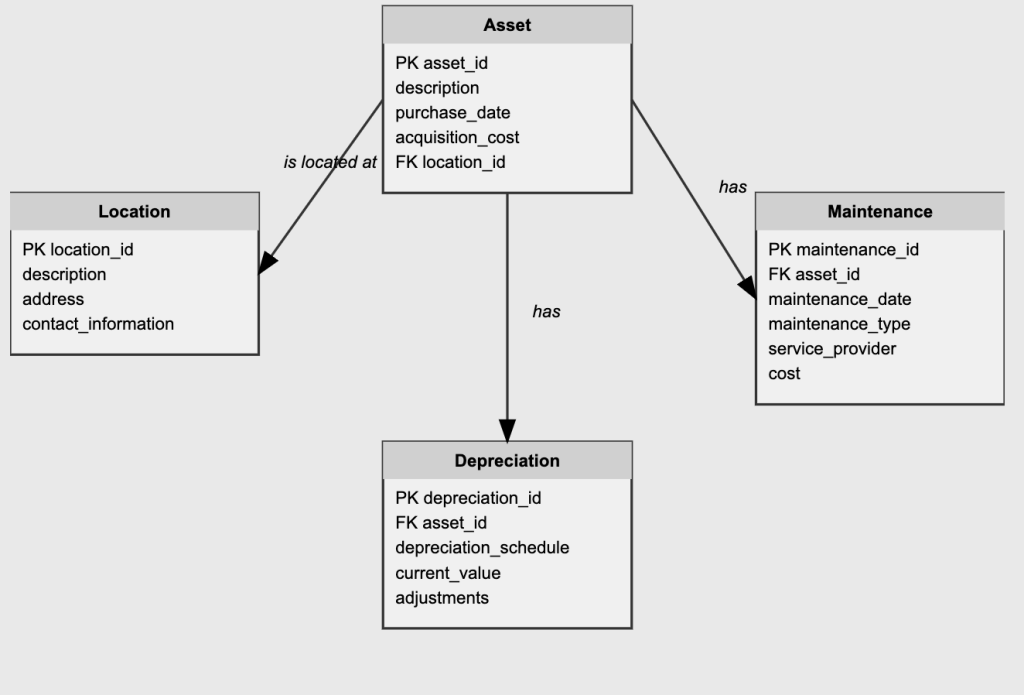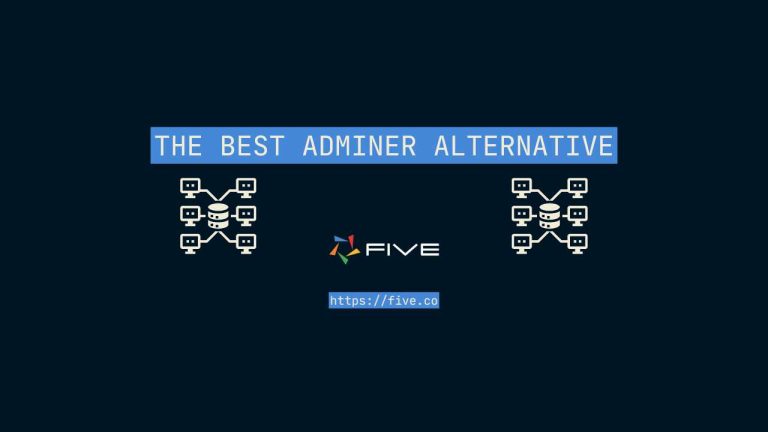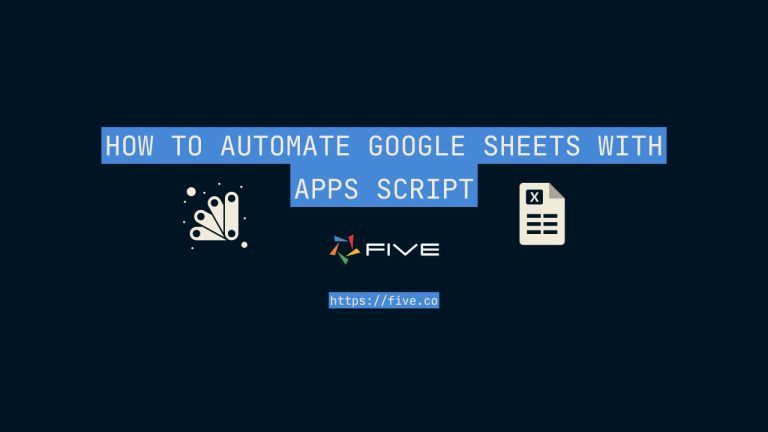Create an Asset Database In 3 Steps
A Quick Guide on How to Create an Asset Database
An asset database is essential for businesses, organizations, and institutions that want to effectively manage their assets and track utilization.
It serves as the central source of truth for managing asset records, monitoring usage, and ensuring compliance with asset management policies.
If you’re unsure where to begin, this guide will walk you through the process of creating an efficient asset database, helping you avoid issues like inaccurate tracking, asset loss, and administrative inefficiencies.
Let’s dive in and learn how to develop an asset database tailored to your needs, whether for a business, educational institution, or organization.
Why Build an Asset Database?
Think about all the items your organization owns and uses daily – from computers and machinery to vehicles and office equipment. Keeping track of all that can be a real headache. That’s where an asset database comes in handy.
- It’s like having a digital inventory that’s always up to date. No more guessing where assets are or how many you have.
- You can easily see how often assets are being used and how well they’re performing. It’s like a health check for your equipment.
- Maintenance becomes easy. The database can remind you when it’s time for a check-up or repair, so nothing falls through the cracks.
- Need to replace something or upgrade? The database helps you plan ahead, so you’re not caught off guard.
- Over time, you can spot patterns. Maybe certain assets are always in high demand, or others are barely used.
Everyone in your organization can be on the same page. No more confusion or miscommunication about what you have, where it is, or who’s using it.
It’s not just about keeping track of assets – it’s about making your whole operation run smoother and more efficiently.
What Is an Asset Database?
An asset database is a centralized system that stores detailed information about your organization’s assets, including descriptions, locations, purchase dates, maintenance records, and any associated actions or notes. It can track physical assets like equipment, vehicles, and inventory, as well as digital assets such as software licenses or intellectual property.
Depending on your needs, you might also track additional attributes like depreciation, warranty statuses, usage histories, and compliance with asset management policies.
Imagine you’re managing assets for a company. Your main system might handle the basics, like what assets you have and where they are. But it might not be great at tracking all the details, such as maintenance schedules, asset lifecycle costs, or compliance with regulatory requirements.
That’s where a well-structured asset database comes in handy. It serves as a one-stop resource for everything related to your assets.
You can easily search and access information, helping you stay on top of asset records, track trends, and ensure that no issues slip through the cracks.
Why Spreadsheets Fall Short for Asset Databases
Many organizations start by tracking assets in Excel or Google Sheets. It might seem convenient at first, especially for smaller businesses. However, as your organization grows, relying on spreadsheets can lead to significant challenges:
- Version Confusion: Different team members may end up with their own versions of the asset data, leading to a chaotic mess of files like “Assets_LATEST,” “Assets – Updated,” or “Old Assets – IGNORE.” It becomes difficult to know which version is accurate.
- No Clear History: Without a proper system, tracking changes and updates becomes a challenge. If an administrator or manager leaves, it might be unclear why certain changes were made or what the current status of the assets is.
- Data Disorganization: As more people interact with the spreadsheet, they might add their own notes, highlight information, or make manual adjustments. Over time, the spreadsheet can become cluttered with conflicting comments and data that are hard to interpret.
Using spreadsheets for asset data defeats the purpose of having a single, reliable source of information. Instead of efficiently managing assets, you end up spending time reconciling conflicting data and trying to figure out what’s current.
Building a dedicated asset database with the right tools can solve these problems. It provides a central, reliable source of information that everyone in your organization can trust and use effectively.
How to Create an Asset Database in 3 Steps

Typically, creating an asset database would require knowledge of SQL and user interface design – a daunting task when you’re already managing the day-to-day operations of a business or organization.
This is why many organizations delay building a proper asset database. It seems complicated and time-consuming.
But that’s where tools like Five come in. Five is an online database builder that makes the process of creating an asset database easy.
While it’s not as easy as snapping your fingers, it’s far simpler than spending weeks learning to code from scratch.
With Five, you can:
1. Quickly set up your asset database: Five offers a user-friendly interface and allows you to import your existing asset records from Excel or other sources, so you don’t have to start from scratch.
2. Add custom features: You can create detailed reports on asset utilization, set up charts to visualize asset data, and track individual assets at a glance. You can also configure alerts to notify you of any asset issues, such as upcoming maintenance or warranties expiring, ensuring timely interventions.
3. Access your database from any device: Whether you’re at your desk or on the go, you can always stay on top of asset data and make informed decisions in real-time.
Ready to Get Started? Here’s How:
- Sign up for free.
- Create your own asset database (or use a template to get started).
- Add forms to capture the information you need.
- Set up logins for your team, ensuring everyone has access to the asset data they need.
Building an asset database has never been easier. With Five, you can improve asset management and keep your team aligned, all without needing to be a database expert.
Five has a team of experts ready to assist you with your development. So, if you ever feel like you’re in over your head, don’t worry, our expert developers are here to help. And yes, we promise not to charge you an arm and a leg or leave you with a system that only we understand.
To get a free consultation, visit this page: “Hire An Expert.”
Step 1: What Do You Need to Know About Assets
First things first, think about what information you really need to track assets effectively. What matters most to your business or organization? What do your team and stakeholders care about? You want your asset database to be the go-to place for all this information, so make it as comprehensive as possible.
Here’s a list of things you might want to keep track of:
- Asset ID and Name
- Purchase dates and acquisition costs
- Current location of the asset
- Maintenance schedules and records
- Warranty and expiration dates
- Usage history and depreciation
- Asset condition and inspection reports
- Compliance with asset management policies
- Contact details of responsible personnel
- Special conditions (e.g., assets under lease, high-value items)
Step 2: Think About How You Manage Assets
Your asset database isn’t just a list—it’s a tool that should help you manage assets day-to-day. Consider tracking:
- When assets are used or moved: Record dates, times, and locations, as well as the personnel involved in the usage or transfer of assets.
- Maintenance and repairs: Keep notes on when and how maintenance is performed, including details of service providers, costs, and any necessary follow-up actions.
- Asset lifecycle management: Monitor when assets are due for replacement, disposal, or upgrades, and track associated costs.
- Asset performance: Track trends such as frequent repairs or high usage, and identify any patterns that need addressing to optimize asset utilization.
The more detailed your records, the more valuable your database will become. For example, if you want to analyze asset utilization trends or ensure compliance with policies, you’ll need to have been recording that data consistently.
Remember, a good asset database evolves with your business or organization. Start with the essentials, and you can always add more detail as you grow.
Step 3: Creating Your Asset Database
With your list of asset attributes and additional information ready, it’s time to move all of this into a proper database.
To do so, sign up for Five, an online database builder that comes with a simple point-and-click interface for creating relational databases.
Follow our video tutorial to build your database tables, forms, and reports, and start managing assets efficiently.
The Asset Database Schema
Here’s the database schema for our application:
- Asset Table: At the core of the database, this table stores detailed information about assets, including asset IDs, descriptions, purchase dates, acquisition costs, and locations.
- Maintenance Table: This table tracks maintenance records, linking assets to specific dates and types of maintenance performed. It includes details such as service providers, costs, and any related notes.
- Location Table: This table contains information about the locations where assets are stored or used, including descriptions, addresses, and contact information of responsible personnel.
- Depreciation Table: This table manages asset depreciation, linking to the Asset Table to track the depreciation schedule, current value, and any adjustments over time.
Each table holds specific information, such as asset details, maintenance records, locations, and depreciation data, ensuring a comprehensive and organized structure for managing assets efficiently.

The Asset Database Schema in Five
With Five, you can easily create and customize this schema to fit your organization’s specific needs, allowing you to manage your assets with confidence and clarity.
Asset Database: Key Features
A Customizable Asset Database
Using Five’s Table Wizards, you can turn the table and field definitions of your asset database into working software. Five, an online database builder, comes with a user-friendly, point-and-click database design tool that even non-technical users can quickly get the hang of. Add as many fields as you wish to your asset database. The database is fully customizable to suit your organization’s needs.
Simple-to-Use Forms
Next, Five allows you to add forms, so you can easily enter data into your asset database. Forms enable you to store or retrieve information from your database. In addition, you can create charts, dashboards, or even PDF reports, which are ideal for quickly generating asset usage reports, maintenance schedules, or inventory summaries.
Login Protected and Secure
Securing asset data is crucial for organizations of all sizes. Five comes with a pre-built authentication feature that adds a login screen to your application. Only registered users with valid credentials can view or edit data. You can also add multi-factor authentication for extra security, ensuring your asset data remains protected.
Generate Documents
Five lets you generate documents straight from inside the application. For example, you can easily create asset reports, maintenance logs, or inventory lists, and build approval workflows for your documents, streamlining your asset management process.
Searchable and Online
Your asset database is searchable and hosted online, making it accessible from any device and at any time. This ensures that your team can stay connected and up-to-date on asset management, whether they’re in the office or on the go.
Get Started with Five Today
To build your asset database with Five, sign up for free access and start the process. If you need assistance, visit our forum to get help from our application development experts as you add more features to your database application.
By following the steps mentioned above, you can create robust and scalable asset software tailored to your needs, all while using the tools provided inside of Five.


